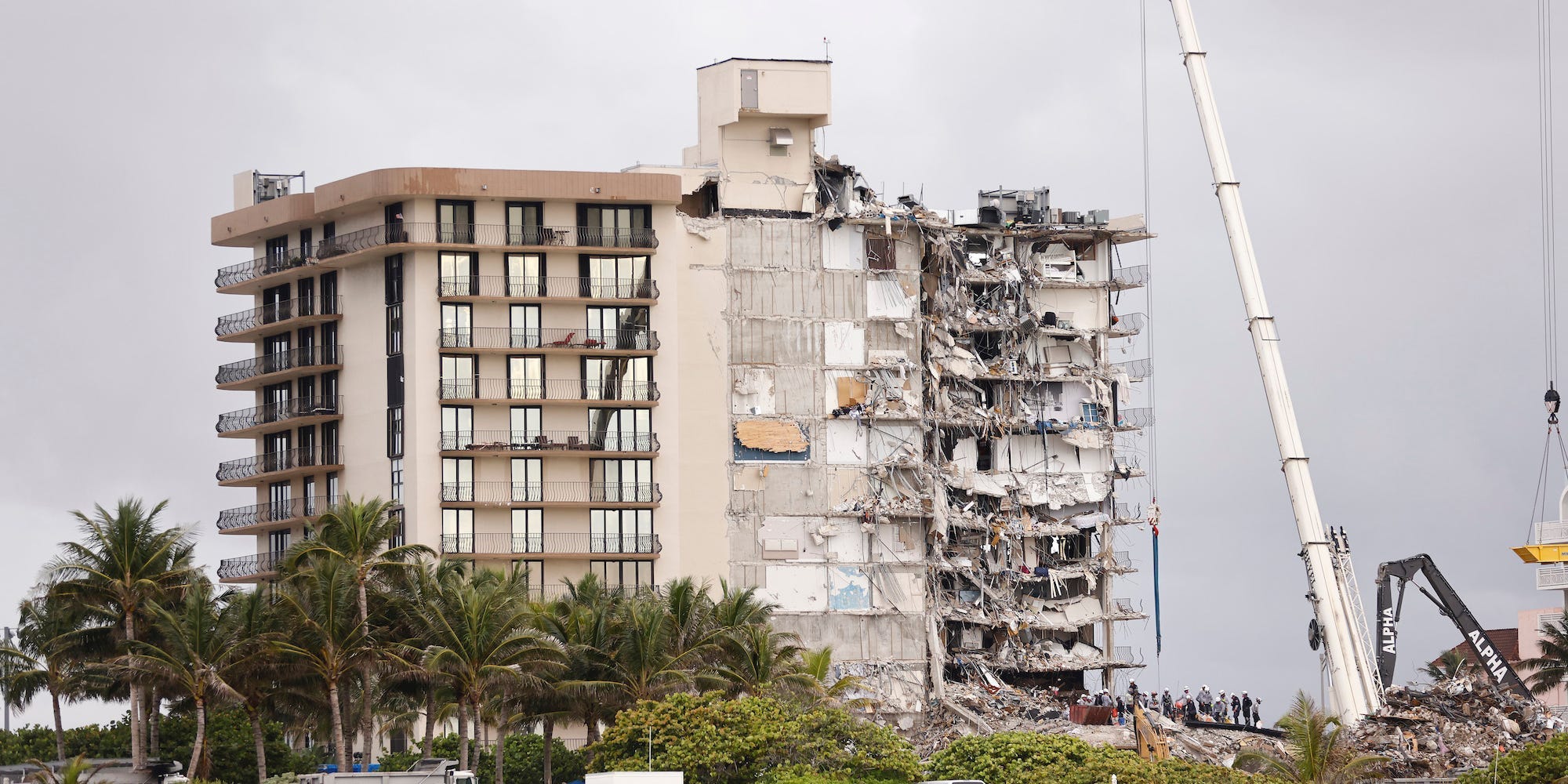
Michael Reaves/Getty Images
- Local governments do not evenly enforce high-rise building rules, The New York Times reported.
- Since the Surfside building collapse, high-rise buildings are being evaluated again for errors.
- The condo that collapsed had "structural issues" but it's not clear if that caused the collapse.
- Visit Insider's homepage for more stories.
The collapse of the Champlain Tower South condo building in Surfside, Florida revealed how the state's strict high-rise building rules were unevenly enforced by different local governments, The New York Times reported.
Miami-Dade County Mayor Daniella Levine Cava last week ordered an audit of all buildings that are more than 40 years old following the collapse.
"We want to make sure that every building has completed their re-certification process, and we want to move swiftly to remediate any issues that may have been identified in that process," Cava said during a news conference.
At least 24 people were killed and 121 are unaccounted for following the Surfside condo collapse.
While what caused the collapse hasn't been specifically determined, evidence has mounted that the building owners were slow to act after a 2018 report found the building has "structural damage."
The Times reported that Florida's high-rise building regulations are among the strictest in the country, but the collapse showed that not all local governments enforced them properly.
Miami-Dade County officials told the Times they were prioritizing reviews of 24 high-rise buildings that either had failed major structural or electrical inspections as part of a 40-year review or did not submit the report. Several of these reviews were pending for years.
Last week, the city of North Miami evacuated the 156-unit Crestview Towers, which was built in 1972, because it was fund structurally and electrically unsafe during a review prompted by the Champlain Tower South collapse.
The Times reported that the city, however, tried for years to get the building into compliance with recertifications requirements, and when they finally submitted paperwork last week it highlighted the safety concerns that led to its evacuation.
When the Champlain Tower's South building was completed in 1981 for instance, developers criticized city officials for helping the project move along after accepting campaign contributions from the project.
Additionally, grand jury inquiries through the 1980s and 1990s showed that there was less than adequate work done by Miami-area building inspectors, however, there wasn't a lot of evidence that those buildings were less sound than others built in other decades.
Residents of high-rise buildings across the area have been worried for their safety since the Surfside building collapse
Some have started posting images of the concrete in their building on social media, but many are superficial errors with nothing structurally wrong.
"All concrete cracks - it's made to crack," Allyn E. Kilsheimer, a structural engineer hired by Surfside to help investigate the Champlain Towers collapse, told the Times. "The issue is to understand what the crack is, what might have caused it if anything, and then making sure it doesn't cause more problems."

